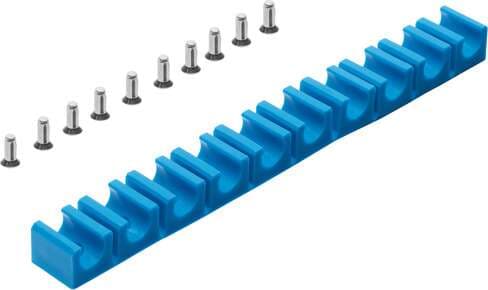Festo Pneumatic Components on Powermatic Associates


Pneumatic Components- Festo
Components that are pneumatic are crucial elements of a pneumatic system, using compressed air to manage movements and carry out a range of tasks in industries like manufacturing, construction, and automation.

18,850 products available

solenoid valve MHE4-MS1H-3/2G-QS-8-K individual valve, fast switching, with cabl...
146 in stock
Quick Quote

front panel valve SV-5-M5-B Valve function: 5/2 monostable, Type of actuation: m...
1 in stock
Quick Quote

threaded bolt FRB-D-MAXI For combination of individual D series service units. C...
10 in stock
Quick Quote

push-in fitting QB-1/2-1/2-U-M male thread with external hexagon. Size: Standard...
1 in stock
Quick Quote

centring sleeve ZBH-7 For combination interfaces with drives and axes. Assembly ...
8 in stock
Quick Quote

push-in bulkhead connector QBS-3/8T-U Size: Standard, Nominal size: 0,315 ", Ass...
5 in stock
Quick Quote

push-in L-fitting QBL-M5-1/4-U-M 360° orientable, male thread with external hexa...
19 in stock
Quick Quote

micro filter MS6-LFM-1/2-AUV 0.01 µm filter, metal bowl guard, fully automatic c...
20 in stock
Quick Quote

push-in fitting QSM-M5-6-I-R male thread with internal hexagon socket. Size: Min...
5 in stock
Quick Quote

Piloted check valve HGL-1/8-QS-6 With sealing ring OL, with QS push-in fitting. ...
2 in stock
Quick Quote
| Item | Manufacturer | Price | Stock | Delivery | |
|---|---|---|---|---|---|
 | 525193 solenoid valve MHE4-MS1H-3/2G-QS-8-K individual valve, fast switching, with cabl... | Festo | 146 in stock | Quick Quote | |
 | 11914 front panel valve SV-5-M5-B Valve function: 5/2 monostable, Type of actuation: m... | Festo | 1 in stock | Quick Quote | |
 | 159643 threaded bolt FRB-D-MAXI For combination of individual D series service units. C... | Festo | 10 in stock | Quick Quote | |
 | 533227 push-in fitting QB-1/2-1/2-U-M male thread with external hexagon. Size: Standard... | Festo | 1 in stock | Quick Quote | |
 | 186717 centring sleeve ZBH-7 For combination interfaces with drives and axes. Assembly ... | Festo | 8 in stock | Quick Quote | |
 | 564752 push-in bulkhead connector QBS-3/8T-U Size: Standard, Nominal size: 0,315 ", Ass... | Festo | 5 in stock | Quick Quote | |
 | 533231 push-in L-fitting QBL-M5-1/4-U-M 360° orientable, male thread with external hexa... | Festo | 19 in stock | Quick Quote | |
 | 529657 micro filter MS6-LFM-1/2-AUV 0.01 µm filter, metal bowl guard, fully automatic c... | Festo | 20 in stock | Quick Quote | |
 | 133005 push-in fitting QSM-M5-6-I-R male thread with internal hexagon socket. Size: Min... | Festo | 5 in stock | Quick Quote | |
 | 530040 Piloted check valve HGL-1/8-QS-6 With sealing ring OL, with QS push-in fitting. ... | Festo | 2 in stock | Quick Quote | |







